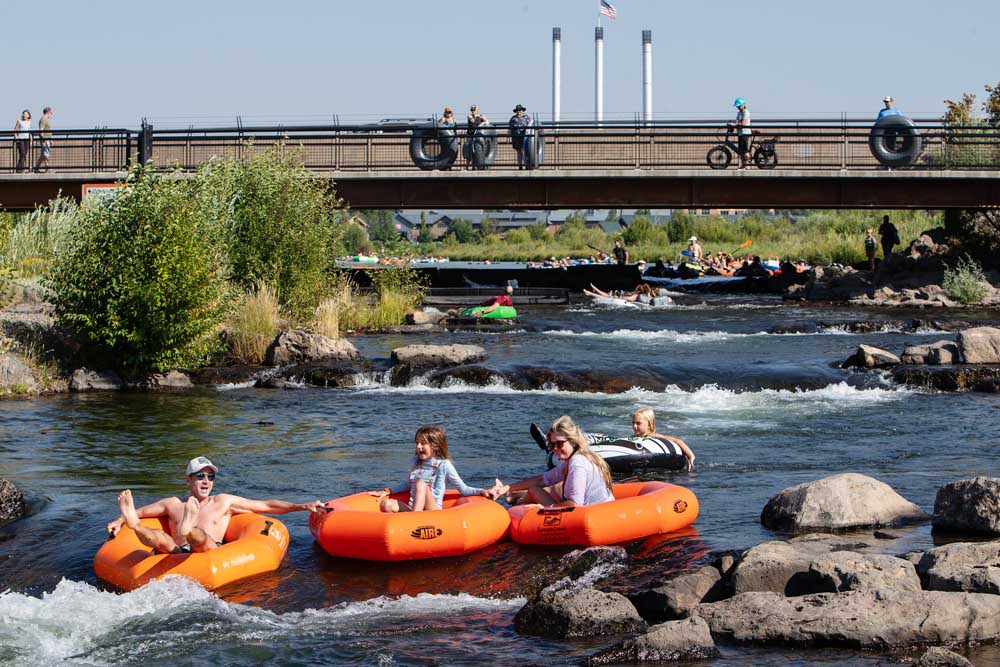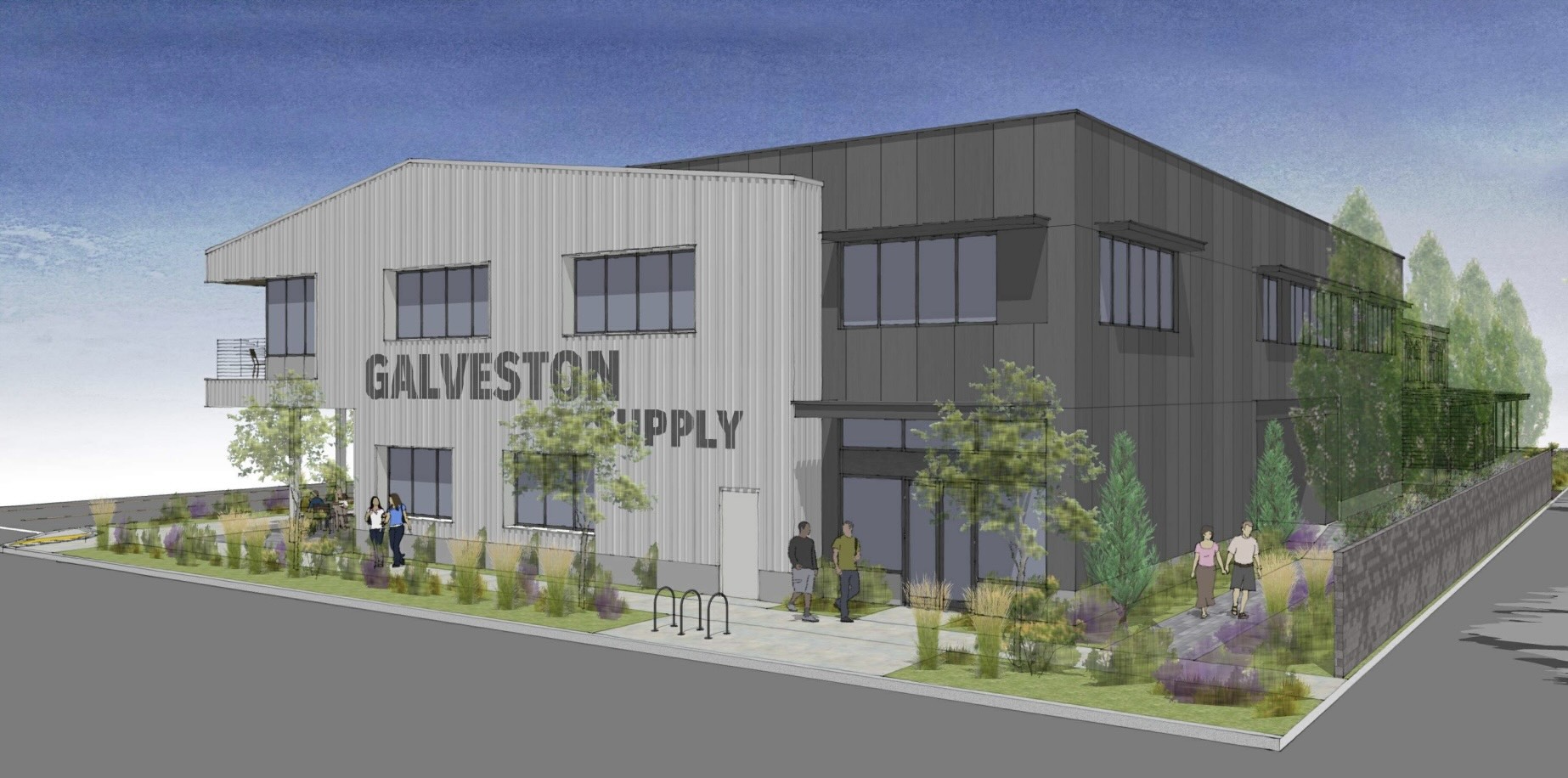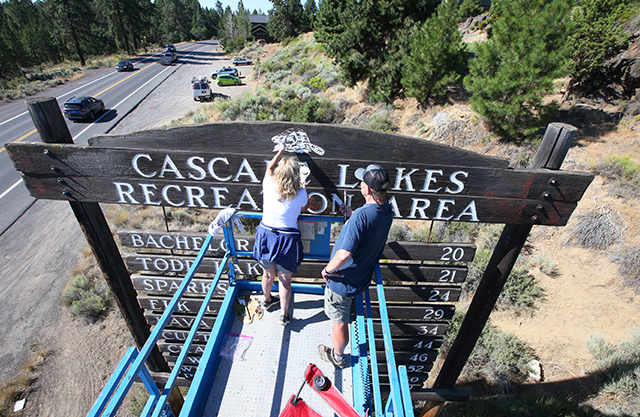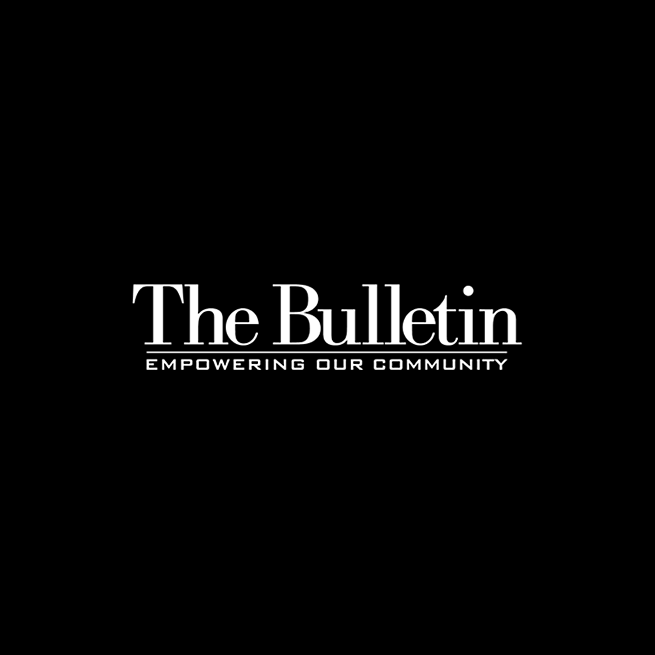Central Oregon tourism can be a benefit or bust
Published 5:45 am Sunday, September 3, 2023

- People floating in tubes and other inflatables fill the Deschutes River at the Bend Whitewater Park on Thursday.
For decades, Bend has been known for its outdoor recreation.
The city’s population was smaller in the 1990s, of course. The number of visitors were, too. But outdoor enthusiasts still came to ski and hike and bike mountain trails — people like Linda and Kevin English.
Trending
The couple heard about the region, visited and moved to Central Oregon in 1999. As multi-sport athletes who enjoyed everything from pickleball to cross country skiing, they found a way to incorporate their love of the outdoors into an opportunity.
They founded a website called Dirty Freehub, an online nonprofit resource for gravel road bikers . The maps provide information about Central Oregon gravel routes for one or several day’s worth of riding, Linda English said.
“We came here because we’re outdoor enthusiasts,” said Linda English. “If you’re a multi-sport athlete, Bend is an amazing place. It has so much variety to offer.
“You can put together a route and cyclists feel invited and get excited about it. They come here and learn about a new community and spend money locally.”
But as Bend became an increasingly popular destination for visitors, the couple became part of the solution as well the problem it spawned.
Trending
Hiking community adjusts to new Central Cascades wilderness permits
Just like similar outdoor destinations — Colorado, Alaska or Montana — there are costs and impacts caused by tourism, namely traffic, congestion and higher priced homes. For those managing the destination, the question is how best to minimize the impacts and balance the needs of both residents and visitors, said Todd Montgomery, Oregon State University-Cascades Hospitality Management executive in residence.
“Bend is well ahead of the game in figuring out the balance,” Montgomery said. “We’re in a lot better position than other destinations that are only in the marketing game, not the management game.”
Tourism, while not the main driver of the Central Oregon economy, is a key player in luring new money to the region. Last year, tourism in Bend generated $365 million, a 13.6% increase over 2021, according the Dean Runyan report. Statewide visitors spent $1.3 billion in 2022, according to the same report.
That kind of spending allows venues and stewards of natural areas to make improvements and provide lasting protections. The 1.3 million annual visitors to Central Oregon can trample a hiking trail. Too many residents out can also trample a trail.
Tumalo Creek Trail is ideal for novice mountain bikers and families
Bend is way ahead of other destinations in that it’s thinking now about how to maintain a sustainable travel and tourism industry that protects natural resources, a main reason people come to the area, Montomery said.
“It will take time to figure out what’s the right balance,” Montgomery said. “A destination management organization can’t control traffic, but they can advocate for bike lanes and other improvements. They can advocate to the policy makers.”
Josh Lehner, Oregon Office of Economic Analysis economist, studied the impacts of a thriving economy like Bend and found that there’s a link between a tourist town and high housing costs.
“Many scenic areas are also highly desirable places to live, with higher rates of working from home, even before the pandemic, and significantly worse housing affordability,” Lehner said. “That creates a wealth effect in many scenic areas where not only are there households with higher income, but also housing values.”
Central Oregon tourism outlook may be blushed by economic unknowns
Looking back
There was a time, about 2007 at the start of the Great Recession, when Central Oregon struggled. Foreclosures rose exponentially, new home projects languished and the economy wasn’t diversified enough to weather the storm. Many community leaders turned to tourism as a solution, said Kevney Dugan, Visit Bend CEO.
“At the time, the thought was we needed to help local businesses get back on their feet,” said Dugan. “Restaurants would open for the summer for six months and close in October, only to reopen in an another location because surviving the winter was untenable and the economy wasn’t thriving.”
Tourism was seen as a way out of the struggles from the recession, Dugan said.
One way to bring in visitors was to attract sporting championships. Between 2010 and 2015, 23 national championships were held in Central Oregon. Another solution was to market to Oregon visitors on the non-summer season, something Visit Bend still does as a way to balance demand.
Tourism in 2022 accounted for 15% of the jobs in Central Oregon, compared to 10% nationwide, Lehner said. Only Santa Fe, New Mexico and Coeur d’Alene, Idaho have larger employment numbers in leisure and hospitality. Health services and private education accounts for 17.2% of the jobs during the same period, according to an economic presentation by Business Oregon.
According to the Brookings Metropolitan Policy Program, Bend is ranked No. 8 among cities in the United States, which probably stems from so many remote workers and start-up businesses locating to the region, Lehner said.
“It’s a place people want to live and they bring their jobs with them,” Lehner said. “People want to live in the community, so they bring a job with them or start a new company in the community.”
That economic diversification comes from the work of the Economic Development for Central Oregon, an economic development nonprofit. Travel and tourism is considered a traded sector — a segment of the economy that brings in outside dollars and creates jobs, said Jon Stark, EDCO CEO.
In the early 2000, EDCO surveyed the founders of 17 companies and asked how they came to Bend, Stark said. All but one said they came first as a visitor. Population figures support the growth. In 2000, Bend’s population was 52,624. A decade later it grew 46% to 76,639, according to a Business Oregon report.
“EDCO was founded on the premise of diversifying the economy by design, not by chance,” Stark said. “Our wealth economy is created by tourism and the money coming in here. Bend is on the map. When we go to trade shows, many people know about Bend or Sunriver.”
Balancing act
Local businesses profit from outside dollars coming into the community, but often visitors are blamed for the ills of the community: traffic, crowded recreational areas and the high cost of housing.
“We all want to live in a vibrant, thriving community,” Dugan said. “While we have a high bar set for our community, it seems unrealistic to expect visitors to come here and have the same standards immediately. We want to encourage people to enjoy our blue skies, mountain vistas and trails and bring their best selves to the community, knowing that we are all on this journey of creating a better Bend, together.”
Community leaders like the late Bill Smith, of Bill Smith Properties, recognized in 2000 after the mills closed that Bend had the opportunity to reshape itself. Smith, who developed the Old Mill District as a mixed use development, linked downtown to the riverfront.
Turning blight into beauty, the Old Mill District transforms Bend
The Old Mill District encompasses 14,000 linear feet of riverfront that at one time was not accessible to the public. Smith’s company preserved 11 historic structures, including the powerhouse building and its three smokestacks. He added walking paths and retail opportunities.
“It was all done in a way that doesn’t further degrade the riverfront,” Dugan said. “The magic is that the upper Deschutes River is wild and natural. It was all developed with access points and management concepts to limit degradation.”
At Dirty Freehub, part of its founding mission is to disperse cyclists along established roads and trails on a variety of routes so that one route is not overused, according to the organization’s mission statement. And at the same time it also wants to support the local communities.
“We realize we can make an economic difference for towns like Madras,” said Linda English. “When you put together routes, cyclists feel invited and get excited. They want to learn about the new community and spend money. We can support these towns where we have routes.”
Tourism is a key pillar in the Central Oregon economy. We look at the drivers behind that, the impacts and how tourism can remain sustainable in the future.
How we got here: From timber town to tourist trip: How Visit Bend helped reinvent Bend into the city we know today
The future of tourism: Sustainability and culture: How Visit Bend reinvests in the city’s future








